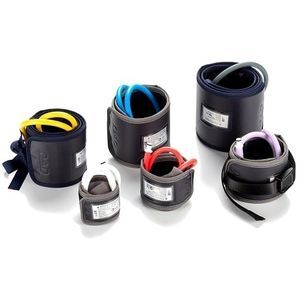
Pneumatic tourniquet G2015 Seriesfor general care
Add to favorites
Compare this product
fo_shop_gate_exact_title
Characteristics
- Type
- pneumatic
- Applications
- for general care
Description
The manometer is graduated from 0 to 600 mmHg with a graduated measuring range every 10 mmHg, and an accuracy of ± 5 mmHg. The manometer made up of a membrane aneroid beryllium copper treated with quality watch-making mechanism.
Owing to their special, robust design, it is possible to sterilise these arm cuffs and lower limb cuffs. They are composed of an envelope and a removable silicone bladder, makes it easier to maintain.
Use of the device – Operating instructions
• Application of the arm cuff or lower limb cuff on the limb :
➢ Exsanguinate the limb using an Esmarch bandage or by elevating at 45° for 5 to 8 min.
➢ Before fitting the tourniquet: - check that the tourniquet to be fitted is of the correct size for the limb - check that the pocket of the tourniquet is sealed - check the quality of the Velcro and seams on the arm cuff / lower limb cuff
➢ Position the tourniquet envelope on a protective bandage, previously applied on the skin of the limb on which the tourniquet is to be fitted.
Application of the arm cuff or lower limb cuff on the limb :
➢ - Connect the pneumatic extension of arm cuff or lower limb cuff in the manometer's connector.
Cleaning and disinfection Important : Before using the device for the first time and before cleaning operation, extract the bladder from the cuff.
Preliminary disinfection
✓ Cuff : immerse the envelope in suitable disinfectant solutions for textiles (detergents, decontaminants).
✓ Bladder : use disinfectant solutions that have been validated for elastic materials. Do not use disinfectants containing components such as phenols or alkylamines (do not immerse the bladder).
Catalogs
STERILIZABLE CUFFS
6 Pages
*Prices are pre-tax. They exclude delivery charges and customs duties and do not include additional charges for installation or activation options. Prices are indicative only and may vary by country, with changes to the cost of raw materials and exchange rates.










